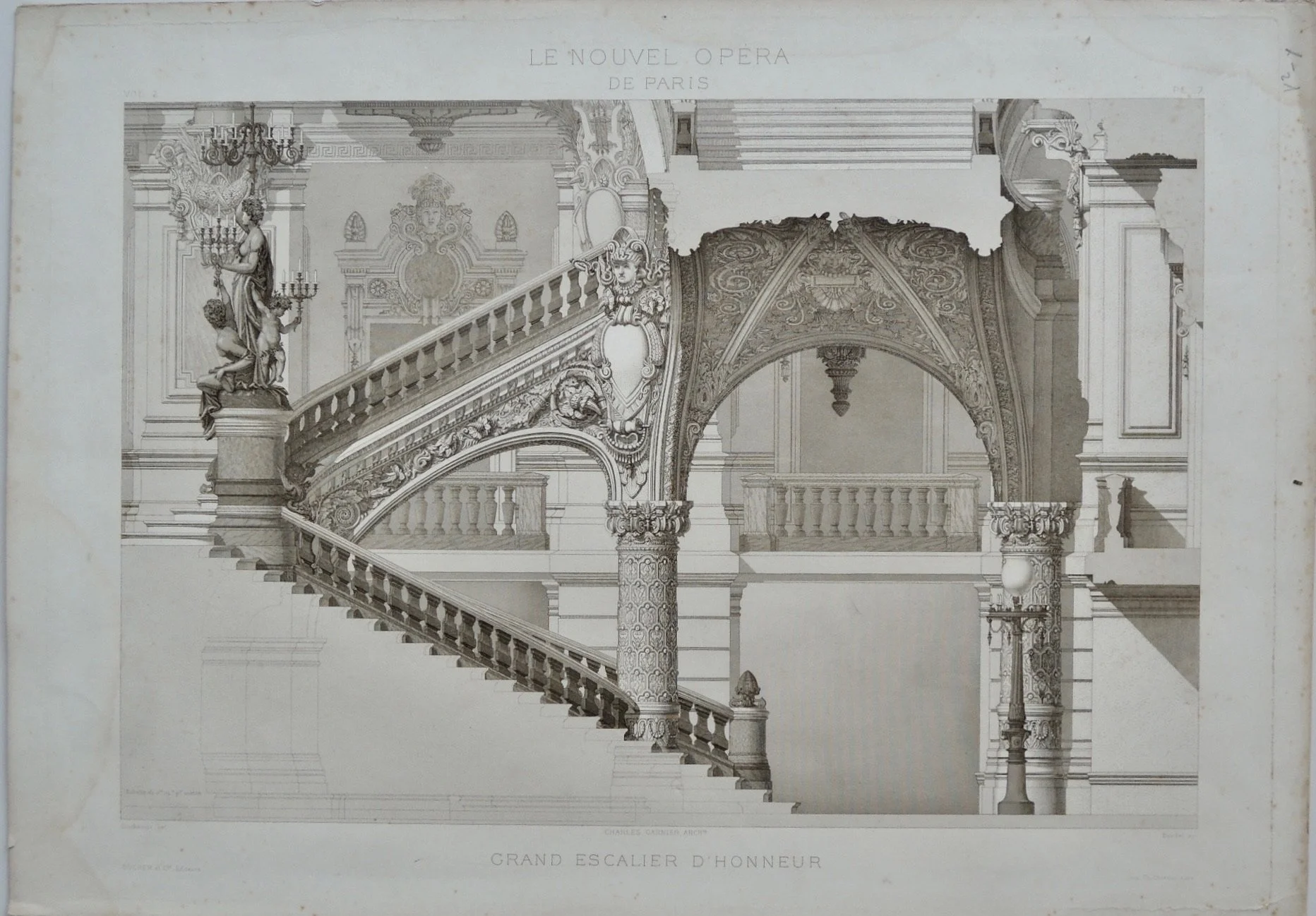Grand Escalier D'Honneur
Grand Escalier D'Honneur
From Le Nouvel Opera De Paris, by Charles Garnier. Produced by Librairie Generale De Architecture Et Des Travaux Publics, Ducher Et Cie, Editeurs, 51, rue de Ecoles, 51, 1878 – 1880.
The Paris Opera House is now regarded as one of the masterpieces of the period built 1862-1875. The origins of the idea for a new opera house can be traced back as far as forty years previous to 1820. When construction was finally started, it was just as quickly suspended after the discovery of an underground lake spring. Although this problem was overcome, the lake persists and lies beneath the cellars of the building. Its architect, Charles Garnier was picked from among 171 contestants, and was relatively unknown although he won the Rome prize in1848. Garnier triumphed over a cramped and difficult site, handling the carriage-ramps and approach steps, the foyers and staircases, both in section and plan, with confidence and skill.
The style is monumental, classically based and opulently expressed, as the times demanded, in an elaborate language of multicolored marbles and lavish statuary A large building, it has a total area of 118,404 square feet and a vast stage with room for up to 450 artists. In fact, the opera seats only 2,200 at full capacity. The Paris Opera House remains an ornate building richly decorated with friezes, columns, and winged figures among other statues and embellishments. This richness continues inside with velvet, gold leaf, and nymphs and cherubs. The auditorium’s central chandelier weighs over six tons. Garnier’s design reflected the aspirations of the Second Empire with its rich coloring and decoration. From his studies of Roman pageantry, he had developed a great sense of occasion and drama which when coupled with a logical floor plan was used to good effect in the opera. It quickly became known as the "Style Napoleon III". The richness continues with velvet, gold leaf, and nymphs and cherubs. The auditorium’s central chandelier weights over six tons, and its’ ceilings was painted in 1964 by Marc Chagall. It is estimated that the architect and his staff produced 30,000 drawings and details for the building.
Charles Garnier was born of humble origins in Paris in 1825. He studied at the Ecole Gratuite de Dessin in the evenings until 1840 when he entered the atelier of Lebas. Later he worked as a draughtsman for Viollet-le-Duc.
In 1842 Garnier entered the Ecole des Beaux Arts where he eventually won the Grand Prix de Rome. He studied for five years at the Academy in Rome where he became interested in the "pageantry of Roman society". He rounded out his architectural education with a visit to Greece and Turkey in 1852.
Back in Paris, Garnier received few private commissions but accepted several municipal posts including that of architect of the fifth and sixth arrondissemnets. In 1861 Garnier entered and won the competition for the new Paris opera house.
25” x 17 3/4”
Steelplate engravings of the most extraordinary detail and finest chromolithographs of their time. Condition excellent with minor spot foxing in margins.
